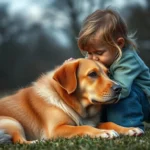
Introduction
Kukur Tihar, a heartwarming celebration dedicated to dogs, is an integral part of the Nepalese festival of Tihar. This festival highlights the deep cultural significance of dogs in Nepal, showcasing the bond between humans and their canine companions. As a day set aside to honor these loyal animals, Kukur Tihar reflects the historical and spiritual connections that have existed between Nepalese people and dogs for generations.
Dogs in Nepal are not just pets; they have historically served as protectors, companions, and helpers in various facets of life, particularly in agricultural communities. Their roles extend beyond companionship, making them cherished members of many households.
What is Kukur Tihar?
Cultural Background
Kukur Tihar has its roots in ancient traditions where dogs were revered as sacred animals. The festival is part of the broader Tihar festival, which honors various animals and deities. Historically, it has evolved to become a distinct day for recognizing the contributions of dogs, particularly as guardians of homes and livestock. This day symbolizes gratitude and respect for the loyalty that dogs show towards humans.
Festival Duration
Kukur Tihar is celebrated on the second day of Tihar, which typically falls in late October or early November, depending on the lunar calendar. The Tihar festival lasts for five days, with each day dedicated to honoring different animals and deities. The days include:
- Day 1: Kag Tihar (Crow Day)
- Day 2: Kukur Tihar (Dog Day)
- Day 3: Gai Tihar (Cow Day)
- Day 4: Laxmi Puja (Goddess of Wealth)
- Day 5: Bhai Tika (Brother’s Day)
Kukur Tihar serves as a reminder of the special bond between humans and dogs, fitting perfectly within the larger narrative of Tihar.
Rituals and Traditions
Day-by-Day Breakdown
Kukur Tihar is marked by various rituals that reflect the love and respect shown to dogs. On this day, dogs are adorned with colorful garlands made of flowers and are often painted with vibrant tika (a mixture of red powder, yogurt, and rice) on their foreheads. This is a symbol of respect and love.
Specific Rituals Associated with Kukur Tihar:
- Feeding: Owners prepare special meals for their dogs, often including rice, meat, and other favorite treats.
- Blessings: Families will gather to bless their dogs, emphasizing the importance of the animal in their lives.
- Celebrations: Many communities organize small gatherings where people and dogs can enjoy treats and festivities together.
Offerings and Celebrations
The offerings made to dogs reflect the deep appreciation that Nepalese people have for them. Typical offerings include:
- Delicious Food: Dogs are treated to their favorite meals, often consisting of rice, meat, and sweets.
- Garlands: Flower garlands are placed around their necks, symbolizing honor and celebration.
- Ritualistic Tika: A colorful tika is applied to their foreheads as a sign of respect and recognition.
Honoring dogs on Kukur Tihar is of great importance, as it highlights their loyalty and the roles they play in families and communities.
Community Involvement
The celebration of Kukur Tihar is not limited to individual households; it extends to the entire community. Local schools and organizations often play a role in the festivities, promoting awareness about the importance of dogs and animal welfare. Events may include:
- Community Gatherings: Local events where people share stories about their dogs and participate in games and activities.
- Educational Programs: Workshops on responsible pet ownership and the significance of animal welfare.
Symbolism of Kukur Tihar
Spiritual Significance
The spiritual beliefs surrounding Kukur Tihar are deeply rooted in Hindu mythology, where dogs are associated with Yama, the god of death. It is believed that honoring dogs can help ensure a safe passage for souls in the afterlife. Dogs are seen as guardians, not only in a physical sense but also spiritually, providing protection and companionship.
Symbol of Loyalty and Protection
In Nepalese culture, dogs are revered as symbols of loyalty and protection. Their unwavering devotion makes them ideal companions and protectors of homes and livestock. This cultural perception emphasizes the importance of dogs as guardians, highlighting their role in maintaining safety within communities.
Regional Variations
Differences Across Nepal
While Kukur Tihar is celebrated nationwide, regional variations exist that reflect local customs and traditions. For example:
- In the Terai Region: Celebrations may include larger community gatherings with music and dance, showcasing the vibrant culture of the area.
- In the Hills: People may focus more on individualized family rituals, emphasizing the bond between dogs and their owners.
Urban vs Rural Celebrations
The contrast between urban and rural celebrations of Kukur Tihar is notable. In urban areas, celebrations may be more organized, with public events and participation from local organizations. In contrast, rural communities may focus on intimate family gatherings, with a strong emphasis on traditional practices.
As modernization influences many aspects of life in Nepal, some traditional practices may be diminishing, leading to concerns about the preservation of this beloved festival.
The Role of Dogs in Nepal
Types of Dogs
Nepal is home to a variety of dog breeds, each serving different purposes within society. Common breeds include:
- Nepalese Sheepdog: Known for its herding capabilities, this breed is commonly found in rural areas.
- Tibetan Mastiff: Often used as guard dogs, these large and powerful dogs protect livestock from predators.
- Local Strays: Mixed-breed dogs are prevalent in urban areas, playing a vital role in communities and often being cared for by locals.
Dog Welfare and Adoption
The celebration of Kukur Tihar also emphasizes the importance of dog welfare, especially during and after the festival. Many animal rights organizations advocate for responsible pet ownership, highlighting the need for proper care and love for all dogs, including strays. Initiatives include:
- Adoption Drives: Encouraging locals to adopt stray dogs and provide them with loving homes.
- Awareness Campaigns: Educating the public about the importance of spaying and neutering pets to control the stray population.
The Impact of Kukur Tihar on Society
Community Bonding
Kukur Tihar fosters a sense of community bonding as people come together to celebrate their love for dogs. This shared experience promotes kindness, compassion, and a deeper understanding of the roles that animals play in human lives. It creates an opportunity for families and neighbors to connect and engage in meaningful conversations about animal welfare and responsible ownership.
Awareness and Education
The festival also serves as a platform for increased awareness about dog care and welfare. Local organizations often utilize this time to educate the public about the responsibilities that come with pet ownership, emphasizing the need for proper nutrition, healthcare, and love for dogs. Schools may incorporate lessons about animal welfare into their curriculum, ensuring that future generations understand the significance of such traditions.
Conclusion
Kukur Tihar is more than just a day to celebrate dogs; it is a reflection of the profound relationship between humans and their canine companions in Nepalese culture. The rituals, traditions, and community involvement associated with this festival enrich the lives of both animals and people, emphasizing loyalty, protection, and love.
As Nepal continues to modernize, the future of Kukur Tihar remains relevant, serving as a reminder of the values of compassion and respect for all living beings. It is essential for future generations to carry forward the spirit of this festival, ensuring that the bond between humans and dogs is cherished and preserved.
Call to Action
Encouraging participation in Kukur Tihar can take many forms. Whether it’s through personal celebrations, community involvement, or supporting local animal welfare organizations, everyone can contribute to the well-being of dogs in Nepal. Supporting initiatives focused on dog welfare and adopting strays can help create a more compassionate society where every dog is loved and cared for.
By learning more about this beautiful festival and the role dogs play in our lives, we can foster a culture of kindness that resonates throughout Nepal and beyond.









